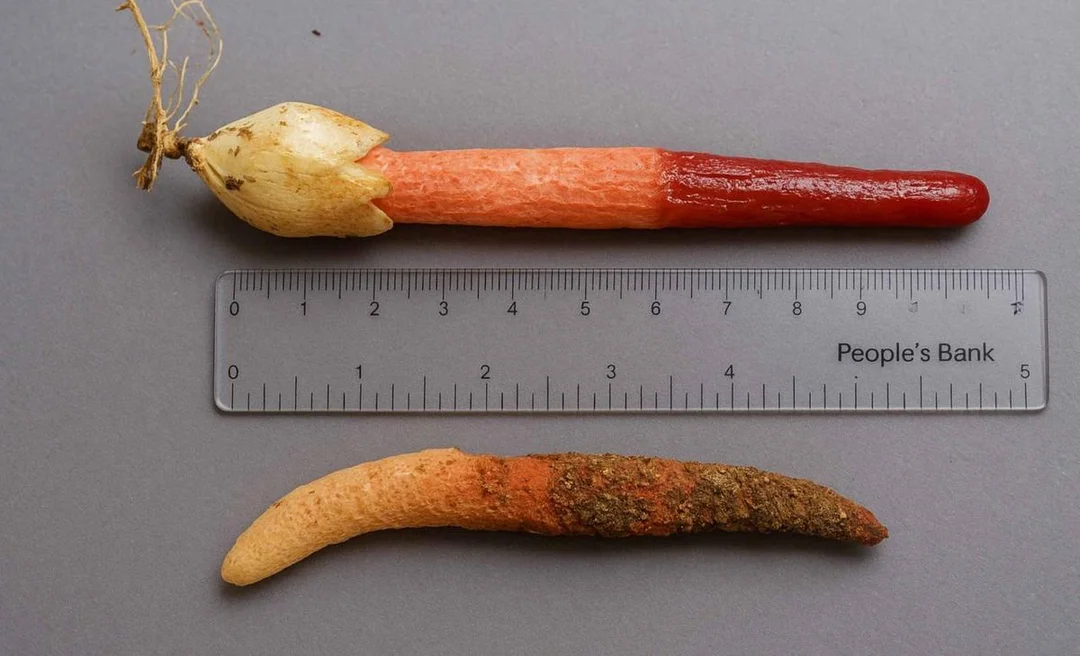
Rare Red Fungus Found in Sri Lanka Sparks Hope for Biodiversity
In a remarkable turn of events, a family in Sri Lanka recently stumbled upon a rare red mushroom in their home garden, prompting scientists to revisit classifications of fungi previously believed to be extinct. On a chilly day, they spotted a unique mushroom with a bulbous base, took a photograph, and reached out to experts.
Dr. Bhathiya Gopallawa, a doctoral researcher from the University of Peradeniya, recognized the species in the family's photograph as Mutinus bambusinus, a fungus last documented in 1919. This stunning reappearance of the stinkhorn mushroom, known for its vibrant red coloration and its peculiar odor, underscores the possible survival of species long thought to be lost.
Stinkhorn fungi are notorious for their strong scent that attracts insects, aiding in their reproduction as these creatures transport spores to new locations. The recent sighting raises questions about the ecological requirements of this particular fungus. The original 1919 finding was associated with bamboo debris, yet the recent specimen sprouted in an area devoid of bamboo, suggesting that its habitat preferences may be broader than once presumed.
Gopallawa anticipates more such reports of Mutinus bambusinus in the future, indicating that this mushroom may be more widespread than previously believed. "Local discoveries play a vital role in tracking rare species, and backyard gardeners can be instrumental in identifying unfamiliar organisms," he reflects.
Finding species thought to be extinct is not only encouraging but pivotal for our understanding of biodiversity. While some organisms resurface, many remain genuinely extinct, underscoring the continuous need for conservation efforts. Biodiversity is crucial for ecosystem stability, influencing our food supplies and environmental quality.
Deepthi Yakandawala, a botanist at the University of Peradeniya, highlights the importance of citizen science in this discovery: "This is a great example of how citizen science can contribute to formal research." The family’s inquiry sparked a scientific investigation, urging casual observers to engage with their environments actively.
Fungi, often overshadowed in biodiversity discussions, play essential roles in nutrient cycling and the decomposition of organic materials. Their importance extends beyond the kitchen, presenting significant opportunities for medical and agricultural advancements.
Looking ahead, experts emphasize the need for vigilance to protect species at risk, even as some re-emerge. Promoting habitat preservation and mitigating pollution are essential to aiding these hidden life forms. Collaborative efforts between everyday observers and scientific communities will facilitate more discoveries, potentially uncovering numerous overlooked species.
The family's encounter serves as a reminder that valuable observations can occur anywhere, and every small investigation can lead to substantial scientific revelations. With the right support, even the rarest of fungi might get a second chance.